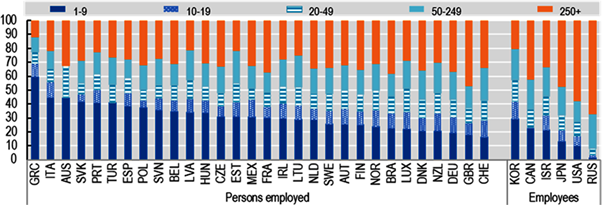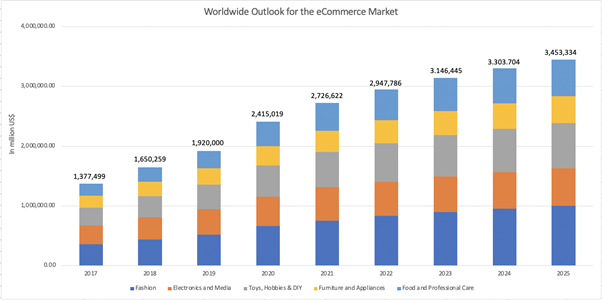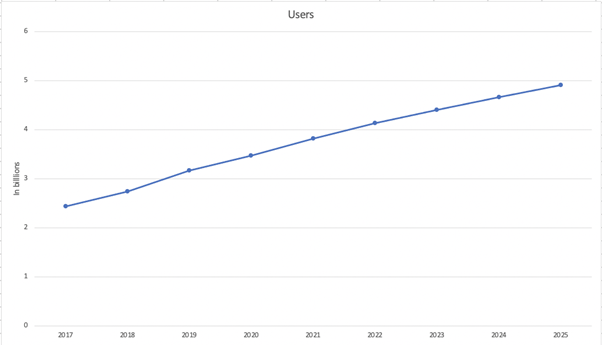The COVID-19 pandemic has led to the fastest acceleration in the digitalisation of our economy. BCG’s CEO Rich Lesser acknowledges that lockdowns are necessary, saying that there is a “very high correlation between the infection rate and economic activity”. Governments and consumers seem to agree, as retail has moved online at an astonishing speed, jeopardising small and medium sized enterprises (SMEs) and small in-person businesses in particular. As we all try to adapt to the new reality, we need to look at the bigger picture and ask ourselves how we, the J7 community, can provide our clients with the tools and strategies to become resilient and succeed in these unprecedented times.
Lockdown effects on businesses and consumers
The impact of uncertainty and lockdown regulations on businesses has been divided. You either are part of the winning industries or you deal with a huge risk of business failure. 2020 has been a year of booming sales for food delivery, online shopping, e-learning and entertainment streaming services, online meeting platforms and cleanliness products, namely hand sanitizer and face masks. However, looking at the economy as a whole, the European Commission is projecting that the Euro Area economy will contract by an astonishing 7.8% in 2020. In comparison, the year 2009 ‘only’ saw a 4.5% GDP decline. These statistics translate into the harsh reality of layoffs and business failures we read about. A study by the International Monetary Fund (IMF) estimates that the jobs at risk due to COVID-19 related to SME business failures represent 3.1 percent of private sector employment. Also, it predicts that without government support, the increase in failure rate of SMEs will increase by 9 percentage points. This trend is alarming, as SMEs make up more than 70% of all businesses across the EU, as seen in Figure 1.
Figure 1: Employment by enterprise size, private sector
Percentage of employment in 2016 or latest available year

OECD (2019), OECD SME and Entrepreneurship Outlook 2019, OECD Publishing, Paris, https://doi.org/10.1787/34907e9c-en.
The consequent shift in consumer behavior only confirms that we are on the same boat. As CEO of the Indian Ecommerce retailer Bata says on CNBC, “we need to be in an intensive learning mode”, the main questions being, how structural will the shift be to Ecommerce and what new product preferences and price sensitivity will result from the pandemic. A McKinsey consumer sentiment survey conducted in September this year found that more than half of the US population is expecting the personal and financial impact of COVID-19-related lockdowns to last longer than an additional four months. In fact, many said they would find alternatives for high-traffic, in-person activities such as going to the mall, which is going to add to the decline in brick-and-mortar retail that we have seen pre-pandemic already.
In contrast to this, Figure 2 highlights the gold rush E-Commerce has seen in 2020. Food & Personal Care, Fashion and Furniture & Appliances have seen an increase between 18 and 40% this year. A spike that no business wants to miss out on. Indeed, many small businesses have joined the sector. As reported in the before-mentioned survey, store curbside pickup have almost doubled compared to pre-coronavirus levels, while “buy online, pickup in-store” practices (BOPIS) have grown by almost 50 percent during the same period. Now, having seen how the events of the past few months shaped the outlook for the economy, let’s take a deeper look at the opportunities and challenges SMEs face, when breaking into E-Commerce.
Figure 2: Projection of revenues in the eCommerce sector (Statista)

Lockdown effects on businesses and consumers
It is no news that the Internet has revolutionized how we shop. E-Commerce allows your business to be open 24/7 and accessible from anywhere in the world, dramatically increasing your reach. As product searches nowadays begin online in 87% of cases, without an online presence you are not on the radar of 9 out of 10 of your potential customers.
The benefits that come with an E-Commerce channel are immense, as the data derived from it is among the best resources a business can get. The technology enables the business to track every click, get a feeling for customer preferences, and calculate their customer’s average basket size and lifetime value. This in turn helps optimize spending and marketing efforts, making your business exponentially more successful.
Figure 3: Projection of eCommerce Users (Statista)

Figure 3 shows that E-Commerce is expected to cater 4.9bn people in 2025, a staggering 60% of the expected 8.1bn people to live on Earth by then. Now compare this to the number of people an SME gets in and out their door on a high-traffic Saturday. The financial benefit that comes with operating an E-Commerce channel during a lockdown phase is clear. A recent Facebook Roundtable Report from September 2020 surveying 25,000 SMEs revealed that “businesses that reported making over 25% of their sales online were more likely to report higher sales than the same time period last year, and less likely to have reduced their number of employees as a result of the pandemic, compared to businesses that made less than 25% of their sales online.“
Critics of E-Commerce point towards the inability to get a real-life view of the product, the difficulty of returns and the difficulty to communicate with the customers directly. These challenges are increasingly easy to resolve by leveraging technology. Promising startups have been emerging in the spaces such as size fitting tech, 3D-graphics and customer representative video chatting, facilitating E-Commerce for both the business and the customer. All in all, experts agree that omnichannel retail still provides for the highest reach and conversion rates, as they are not rivals but complement each other.
What it takes to open your virtual doors
The word “crisis” in Chinese actually includes the character for “opportunity” in its spelling. A 2019 study by the European Commission shows that “less than a third of small businesses in the EC have a high degree of digitalisation”, therefore we see a huge opportunity to help SMEs transition to online. The primary challenges of entering the E-Commerce market are of operational and promotional nature: How do I build a website that people know and buy from, when I am actually struggling to pay rent for the shop space I cannot use because of lockdown restrictions? How do I ship and deliver products via E-Commerce? How do I engage my customers from home?
Youth-led consulting firms across Europe are ready to support SMEs in their transition to digital with their strategic capabilities and experience. With most of J7’s associates forming part of GenZ, we aim to help our clients reap the full benefits of the Internet for their businesses and customers. We hope that our strategic advice and support will help leaders of SMEs across Europe and beyond to open their virtual doors.

